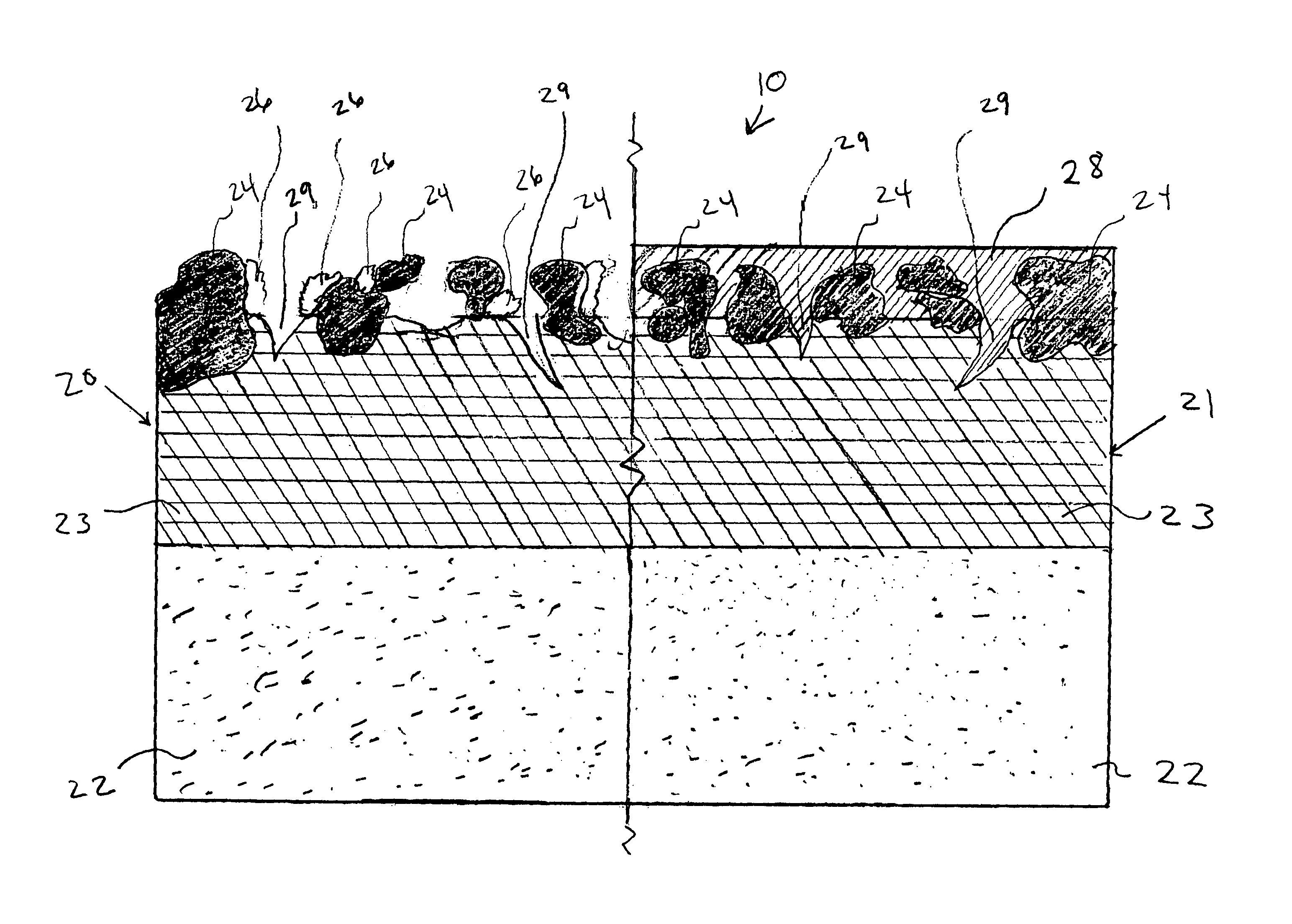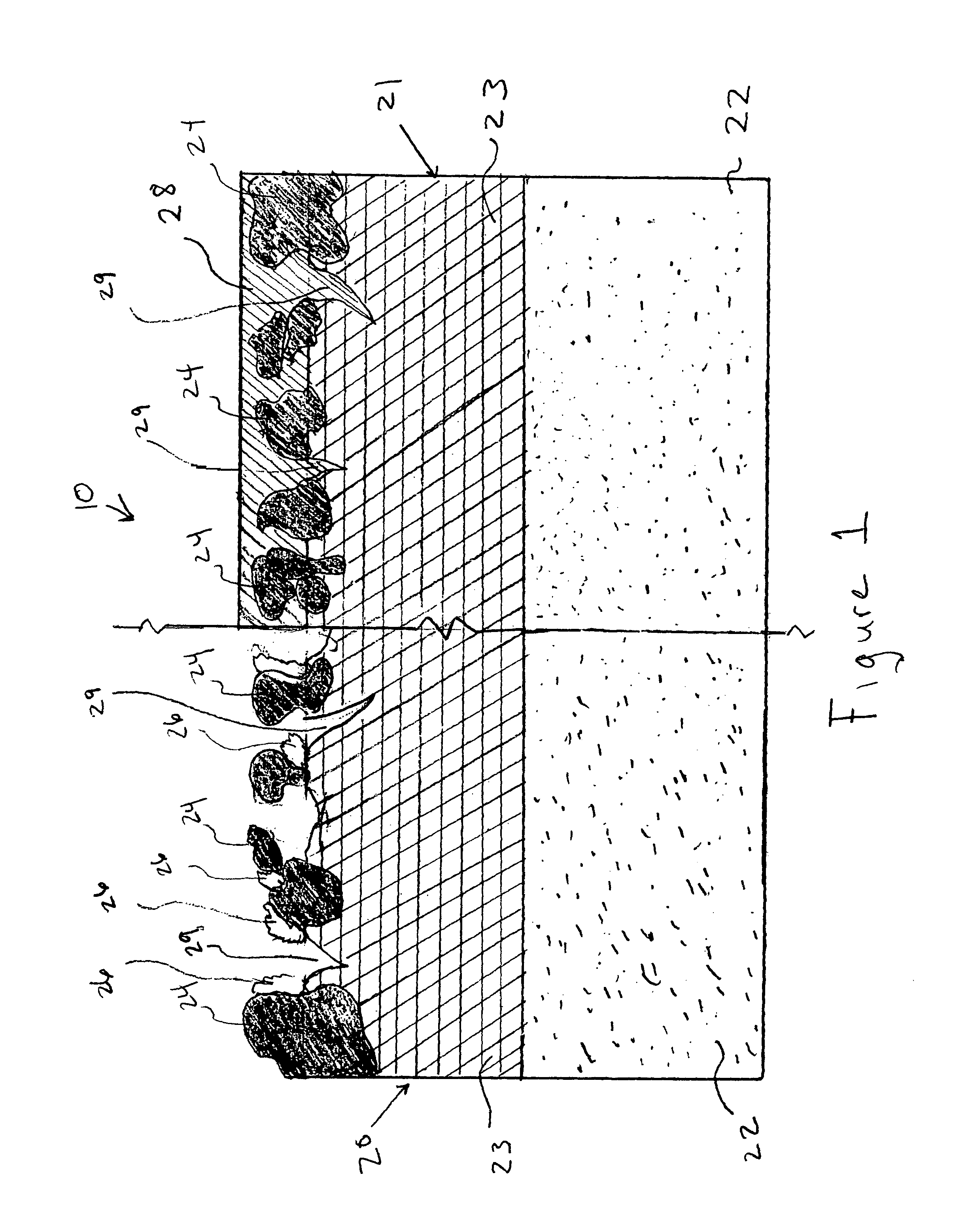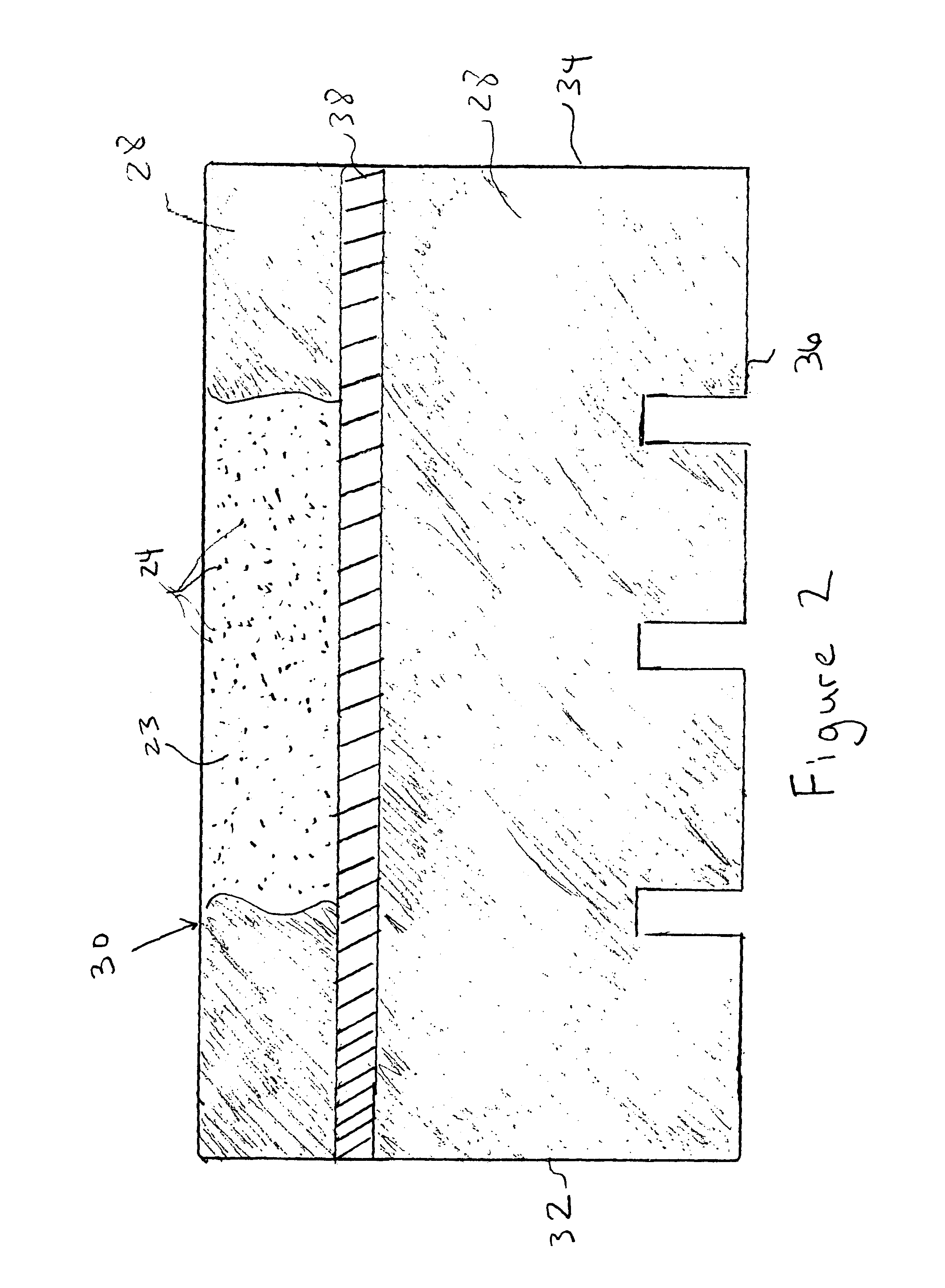Composition and method of sealing and protecting asphalt shingles or other porous roofing and construction materials
a technology of asphalt shingles and roofing, applied in the direction of special tyres, vehicle components, tire parts, etc., can solve the problems of mold, mildew and algae growing on the roof, adversely affecting the integrity and lifetime of the roof, and the type of roofing system is especially susceptible to damage, etc., to achieve increased granular adhesion, low viscosity, and increase the effect of roof wind resistan
- Summary
- Abstract
- Description
- Claims
- Application Information
AI Technical Summary
Benefits of technology
Problems solved by technology
Method used
Image
Examples
example 1
[0040]The following compounds are illustrative of the invention described above:
[0041]
TABLE 1ROOF-GUARD 101 ™ROOF-GUARD 102 ™AmountAmount(% by(% byComponentTypeweight)Typeweight)AcrylicAcrylic / vinyl22-26Acrylic / vinyl21-22polymerco-polymerco-polymerSiliconeDimethylpoly-0.01 to 4Dimethylpoly-0.01 to 4surfactantsiloxanesiloxaneUV 2-Hydroxy-4-n-0.0001 to 42-Hydroxy-4-n-0.0001 to 4Inhibitoroctyloxybenzo-octyloxybenzo-phenonephenoneBiocideCopper SulfateCopper SulfateOtherWater70-75Water72-79
[0042]
TABLE 2PropertyROOF-GUARD 101 ™ROOF-GUARD 102 ™Density8.7 lbs / gal8.7 lbs / galpH8.08.0Theoretical15-30 dynes / cm15-30 dynes / cmsurface tension
[0043]Roof-Guard 101™ shown above in Tables 1 and 2 is formulated primarily for asphalt shingle roofs while Roof-Guard 102™ is for use primarily with clay, cementatious / concrete, or barrel tile roofs.
example 2
[0044]Owens Corning Classic AR20 Three Tab Asphalt Shingles coated with Enviroseal Corporation Roof-guard 101™ Protective Sealer for shingles were tested in accordance with Florida Building Code (HVHZ) Test Protocol TAS 100-95, Test procedure for wind and wind driven rain resistance of discontinuous roof systems (PRI Asphalt Technologies, Tampa Fla.; test report May 5, 2005, test date Apr. 28, 2005.) The shingles used in this test were rated as 60 mph wind resistance. The roof surface used during this test had a 3 inch on 12 inch pitch. The Roof-Guard 101™ Protective Sealer was applied at a rate of 1.33 gallons per 100 square feet (75 ft2 / gal). The following results were achieved under this test:
[0045]
TABLE 3SimulatedWaterAir VelocityRainfallShingleinfiltrationConditionconditionDurationMovementunder deck35 mph8.8 in / hr15 minNoneNone 0 mphOff10 minNoneNone70 mph8.8 in / hr15NoneNone 0 mphOff10NoneNone90 mph8.815NoneNone 0 mphOff10NoneNone110 mph 8.8 5NoneNone 0 mphOff10NoneNone
[0046]As...
example 3
[0047]Aged existing shingles (installed for 12 years) and new shingles were tested under ASTM D4491, Water Permeability of Geotextiles, Constant Head Method. This test is used for determining the hydraulic conductivity (water permeability) of geotextiles in terms of permittivity under standard testing conditions, in the uncompressed state. Both the aged and new shingles were treated using Roof-Guard 101™. Deviations from the standard included laboratory temperatures at 22±3° C., laboratory humidity at 50±15%, and oxygen content of the water was 6±2 ppm. The test results were corrected to 20° C. The following results were obtained from this test:
[0048]
TABLE 4Change inPermeabilityFlowratebetween untreated (gal / PermittivityPermeabilityand treated likeMaterial typemin / ft2)(s−1)(cm / s)materials (%)12 yr shingle -1.1680.031220.00322N / Auntreated12 yr shingle -0.7290.019480.0022629.8treatedNew shingle -0.1280.003420.00041N / AuntreatedNew shingle -0.1080.002900.0003417.1treated
[0049]As seen fr...
PUM
| Property | Measurement | Unit |
|---|---|---|
| surface tension | aaaaa | aaaaa |
| thickness | aaaaa | aaaaa |
| thickness | aaaaa | aaaaa |
Abstract
Description
Claims
Application Information
 Login to View More
Login to View More - R&D
- Intellectual Property
- Life Sciences
- Materials
- Tech Scout
- Unparalleled Data Quality
- Higher Quality Content
- 60% Fewer Hallucinations
Browse by: Latest US Patents, China's latest patents, Technical Efficacy Thesaurus, Application Domain, Technology Topic, Popular Technical Reports.
© 2025 PatSnap. All rights reserved.Legal|Privacy policy|Modern Slavery Act Transparency Statement|Sitemap|About US| Contact US: help@patsnap.com



